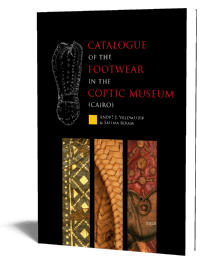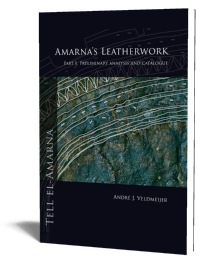Abstract:
This pioneering volume brings together specialists from contemporary craft and industry and from archaeology to examine both the material properties and the cultural dimensions of leather. The common occurrence of animal skin products through time, whether vegetable tanned leather, parchment, vellum, fat-cured skins or rawhide attest to its enduring versatility, utility and desirability. Typically grouped together as ‘leather’, the versatility of these materials is remarkable: they can be soft and supple like a textile, firm and rigid like a basket, or hard and watertight like a pot or gourd. This volume challenges a simple utilitarian or functional approach to leather; in a world of technological and material choices, leather is appropriated according to its suitability on many levels. In addressing the question Why leather? authors of this volume present new perspectives on the material and cultural dimensions of leather. Their wide-ranging research includes the microscopic examination of skin structure and its influence on behaviour, experiments on medieval cuir bouilli armour, the guild secrets behind the leather components of nineteenth-century industrial machinery, new research on ancient Egyptian chariot leather, the relationship between wine and wineskins, and the making of contemporary leather wall covering.
The Archaeological Leather Group promotes the study of leather and leather objects from archaeological and other contexts. The Group aims to provide a focus for the investigation of leather, and to develop new research by bringing together a broad range of knowledge and experience both practical and academic. Leather is explored through its manufacture, function, context, processing, recording, conservation, care and curation. Members come from a variety of disciplines and include archaeologists, historians, conservators, artefact specialists, materials engineers and leather workers. The Group normally meets twice a year and organises one scholarly meeting in the spring, and visits a museum, working tannery or other place of leather interest in the autumn. The Archaeological Leather Group Newsletter is published twice a year, and the website maintains a comprehensive and expanding leather bibliography.
Contents
Chapter 1. Introduction. Leather in Archaeology; Between material properties, materiality and technological choices
Susanna Harris
Chapter 2. Skin deep: An outline of the structure of different skins and how it influences behaviour in use. A practitioner’s guide
Amanda Michel
Chapter 3. Cuir bouilli armour
Eddie Cheshire
Chatper 4. Bespoke vellum: Some unusual requests
Laura Youngson Coll
Chapter 5. Leather in the textile industry – A memoir
Alan S. Raistrick
Chapter 6. Why Leather in ancient Egyptian chariots?
André J. Veldmeijer & Salima Ikram
Chapter 7. Why wineskins? The exploration of a relationship between wine and a skin container
Barbara Wills & Amanda Watts


Dr.
Susanna Harris
Dr. Susanna Harris is Lecturer in Archaeology at the University of Glasgow. Her research focus lies on prehistoric Europe and the central Mediterranean with expertise in organic artefacts and representational art. She studies textiles, leather and basketry of the Neolithic to Bronze Age and the role of these materials in dress and identity investigated through people represented in stone, metal or ceramics.
read more












